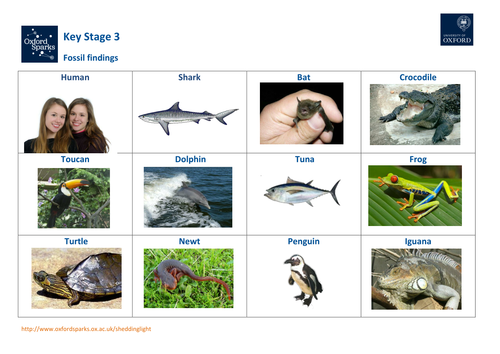






Light is more than just light bulbs and sunshine. Researchers can use different types of light to investigate and do a range of things. This activity is based on the work being carried out at The University of Oxford where researchers are using x-ray tomography (CT scanning) to visualise and measure the 3D structures of fossilised organisms that are still encased in rock.
Students will classify-modern day vertebrates before repeating with extinct animals. They will then go on to use evolutionary trees and see how palaeontologists are using x-rays to study fossils in order to collect evidence about how living things evolved.
Learning outcomes: 1) Classify vertebrates based on their similarities and differences; 2. Use evolutionary trees to explain why species have similarities and differences; 3) Describe how x-rays help gather evidence for evolutionary relationships.
See more at: http://www.oxfordsparks.ox.ac.uk/content/shedding-light-situation
Students will classify-modern day vertebrates before repeating with extinct animals. They will then go on to use evolutionary trees and see how palaeontologists are using x-rays to study fossils in order to collect evidence about how living things evolved.
Learning outcomes: 1) Classify vertebrates based on their similarities and differences; 2. Use evolutionary trees to explain why species have similarities and differences; 3) Describe how x-rays help gather evidence for evolutionary relationships.
See more at: http://www.oxfordsparks.ox.ac.uk/content/shedding-light-situation
Something went wrong, please try again later.
This resource hasn't been reviewed yet
To ensure quality for our reviews, only customers who have downloaded this resource can review it
Report this resourceto let us know if it violates our terms and conditions.
Our customer service team will review your report and will be in touch.
£0.00
